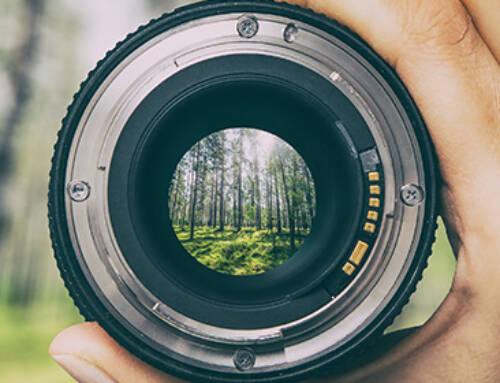Gratitude, and the idea behind writing down what we’re grateful for each day, seem to be gaining more and more traction. So what’s the hype, and is gratitude journaling all it’s cracked up to be? Here’s some research and science that may make you want to crack open your own gratitude journal…
Why gratitude?
Let’s start with some research that was shared by Harvard Health Publishing at the Harvard Medical School…
“Two psychologists, Dr. Robert A. Emmons of the University of California, Davis, and Dr. Michael E. McCullough of the University of Miami, have done much of the research on gratitude. In one study, they asked all participants to write a few sentences each week, focusing on particular topics.
One group wrote about things they were grateful for that had occurred during the week. A second group wrote about daily irritations or things that had displeased them, and the third wrote about events that had affected them (with no emphasis on them being positive or negative). After 10 weeks, those who wrote about gratitude were more optimistic and felt better about their lives. Surprisingly, they also exercised more and had fewer visits to physicians than those who focused on sources of aggravation.”
More optimism and hope, increased energy for exercise, and fewer visits to the doctor… sign me up! And that’s all the result of writing just a few sentences each week. We’re not talking about constructing novels here. Keeping a gratitude journal is simply investing a few minutes each week to refocus ourselves on what we’re grateful for. If we want results like the study, then investing just a little time to reflect should be achievable for all of us.
So why is gratitude so important? Here’s what the act of being thankful is shielding us from…
Fighting Back Against Negativity Bias
As humans, we’re hard-wired with negativity bias. It’s what causes us to naturally fixate on negative events in our lives rather than focusing on the positive ones. Research confirms that we learn from negative experiences and make decisions based on negative information more than positive data. Why is negativity so mentally sticky? For our ancestors, danger lurked around every corner. Survival required a heightened awareness of our threats, and over time, we wired our brains to focus on those dangers. Living to see one more day depended on our ability to anticipate where the next predator was hiding.
Today our survival doesn’t require that same heightened alert level, but negativity bias still influences how we think and act in our lives. An article on TheDecisionLab.com shared the following…
“A study conducted in 1998 by Tiffany Ito and colleagues concluded that humans react more intensely to negative stimuli, be it pictures, videos, or words. The research study was conducted by showing 33 different study participants’ photos and measuring their brains’ electrical activity to identify their responses. The researchers presented neutral images (such as a plate, and an electrical outlet), positive photos (such as people enjoying themselves), and negative images (such as a gun pointed to the individual holding the picture).
The research study found that images that generated the most brain activity, also referred to as Event-Related Brain Potentials (ERPs) occurred when participants held the negative images. Thus, researchers of the study concluded that negative stimuli more strongly influence individuals.”
So, even though the predators are no longer a threat, we’re still being unconsciously influenced by the negatives in our lives more than the positives. It happens every day without us realizing it, so how do we keep the negativity at bay? Gratitude is one powerful tool we can all use in our lives.
Neutralizing Our Negativity Bias
It’s extremely challenging to think two thoughts at the same time. That’s not to say it’s 100% impossible… the research is still somewhat divided on that. For a small percentage of individuals, it might work. But, for the rest of us, we’re one-thought-at-a-time thinkers.
With that in mind, and knowing that our natural bent is toward negativity bias and thinking negative thoughts, then our only defense is to be intentional about guarding what our mind is processing. We have the power to derail negativity in our lives by replacing it with positive thoughts. Gratitude is a natural option, and a gratitude journal creates space for that in our lives.
Often, we frame how we experience gratitude in our lives based on levels of magnitude. We can easily fall into a trap where we’re only aware of gratitude when experiencing big life events. For example, a new home, the birth of a child, or an exciting job transition can all induce this feeling. It’s easy to feel grateful when the events in our lives are over-the-top in scale and very obvious.
To fuel the kind of daily gratitude required to derail our negativity bias, we need to look elsewhere for our gratitude triggers. Unfortunately, those big events only come around every so often. If we wait for those to experience gratitude in our lives, finding gratitude will be hit and miss. We need to develop an awareness of the small things in our lives that we are grateful for… a sunrise, someone smiling at us, the smell of fresh cookies, waking up for another day.
The Power of Writing It Down
In our tech-saturated world, writing down our thoughts can feel a bit foreign and old-fashioned. That said, there is a science-backed reason to pick up a pen or pencil and allow your thoughts to flow through your hands.
An article from ScienceDaily.com unpacks this concept. Professor Kuniyoshi L. Sakai, a neuroscientist at the University of Tokyo, shares the result of research published in Frontiers in Behavioral Neuroscience. Their research compared the use of paper and pen to multiple forms of technology, including a tablet and smartphones. “Actually, paper is more advanced and useful compared to electronic documents because paper contains more one-of-a-kind information for stronger memory recall.”
Based on what they found, volunteers who wrote things down on paper had more brain activity in areas associated with language, imaginary visualization, and in the hippocampus — an area known to be important for memory and navigation. In addition, the research team shared that analog methods of taking notes, for example, pen and paper, contain richer spatial details and are easier to recall in the mind’s eye.
Consider that for a moment… the things we write down are easier to recall. If that’s the case, and we have already agreed on the need to combat our natural negative bias, then this connection is important. When I am getting pulled toward negativity, my ability to recall the things I am grateful for provides a natural, positive reset… and we have the opportunity through using a gratitude journal to make that possible.
Finding Your Gratitude Journal
The world is full of options for gratitude journals. Soft cover, hard cover, leather bound, big and small, lined and dotted… some people just use a spiral notebook. Simply put, use what feels comfortable to you. Find a writing utensil and a journal you like, and start slow. Again, you’re not looking to write a novel here. Just capture the thoughts that rise up when you think about gratitude in your own life each day.
It can be intimidating to get started, and beginning by staring at a blank page can feel overwhelming. How do I start? One way to make journaling easier is to find a journal with some simple prompts included. We love these guided gratitude journals on Amazon with their included prompts and quotes. These simple cues are really good for helping you get focused and inspiring your thoughts on personal gratitude.
If you’re looking for something unguided and spontaneous, with open spaces to write whatever you want, LEUCHTTURM1917 and Moleskine are two popular journal brands that we love.
The Takeaway
Keeping a gratitude journal, and capturing what you’re grateful for in your life not only feels good, but there are science-based reasons to give this a try. Find a journal you like, and commit to exploring this for thirty days. Then, take some time to assess how it made you feel and to look back on what you were thankful for over the last month. You might just find that your gratitude journal becomes a lifelong companion…
Ready for more?
Follow me here for more insights like this one. You’ll also get massive value out of the Grit Meets Growth podcast that I share with Chris Cathers. Find it here or on your favorite podcast platform!





